Chances are that if you're a Mustang owner, you know the horsepower output of your car. At the very
least, it's the number that Ford provides for fresh-out-of-factory Mustangs. If you're into mods, you
might even have used a dynamometer (or dyno) to measure your car's horsepower. As an automotive term,
horsepower is everywhere. It's in marketing materials, on websites, and covered in car reviews. Mustang horsepower ranges from 760 in the 2021 Shelby GT500 to a low of 88 in some four-cylinder Fox Body
cars. So, for many enthusiasts, horsepower is a measuring stick for performance. With all this attention
on horsepower, it's easy to overlook another measurement of engine power: torque. If you know your
Mustang's horsepower AND torque specs, then pat yourself on the back for being so aware of your car. Just the term “horsepower” itself is recognizable and somewhat easy (in theory) for a one to grasp. You
know what a “horse” is, and you understand what “power” means. On the other hand, the definition of
“torque” is less understood. You probably think it has something to do with twisting, right? It's essential to look deeper into the function of both horsepower and torque and how they work together
to give your Mustang power (or lack thereof, if you've got one of those four-banger Fox Bodies). In this article, we'll cover the fundamentals of horsepower vs torque in a Mustang. How both interact and
what else is vital in understanding engine performance. We'll keep the math, history, and physics to a
minimum, so consider this a quick course in “Mustang Power 101.”
Horsepower vs Torque
What Is Torque
What Is Horsepower
HP & TQ With Mustangs
Dyno Graphs
Bullitt Dyno Graph
F-150 Dyno Graph
Fundamentally, horsepower and torque (besides heat and emissions) are what results from the operation of
an internal combustion engine (ICE). Start the engine, step on the gas, and fuel and air are mixed and
ignited in the combustion chamber. With the cylinders moving and the crankshaft turning, engine output
is then directed toward the drive train. Keeping this in mind, let's look at some definitions. Torque is the measurement of rotational or twisting force and specifies how much work can be done.
Remember that torque describes the strength of an engine and measures the twisting force around an axis.
You calculate torque by multiplying force by distance (force X distance). Let's say you apply one pound
of force at the end of a foot-long wrench while turning a bolt. This results in one pound-foot of torque
being applied to the bolt. Similarly, if you apply two feet of torque to the same foot-long wrench, you
are also applying two pound-feet of torque to the bolt. Apply two feet of torque to a two-foot-long
wrench, and the bolt will be turned using four pound-feet of torque. You get the idea. To apply more
torque, increase either the force or the distance, or both. Now, let's apply this to an ICE powerplant. As we mentioned, each cylinder helps to rotate the
crankshaft. Torque is measured by multiplying the force generated by each cylinder by the distance from
the crankshaft. Just like with the wrench example, adding more force or more distance increases torque. In an engine,
this means the more a crankshaft can rotate translates into a more powerful engine. Engine architects
have devised countless ways to squeeze more torque from a power plant. This may include increasing
displacement or throw. The throw is the distance from the crankshaft center to the crankpin and
determines an engine's stroke. It's one-half the stroke. For example, diesel engines generally have more torque than gas engines because of a longer throw. This
is why you are more likely to see diesels in heavier vehicles or trucks that may haul or tow heavy
loads. In a lighter, gas-powered car, this extra torque can help with acceleration. Horsepower is a calculation of force divided by time. In other words, how long it takes to complete a
specific amount of work. The origins of this measurement go back to James Watt in 18th-century England,
who determined that a horse could lift 330 pounds of coal 100 feet in one minute. This could also mean
33 pounds could be lifted 1,000 feet in the same time. Or, 1,000 pounds of coal could be raised 33 feet
in one minute. These are all calculations for one horsepower or 33,000 lb-ft of torque per minute. Importantly, horsepower measurement includes torque, so you'll see why horsepower and torque go
hand-in-hand. The formula to calculate is (torque X RPM / 5252). We'll skip the drawn-out conversation
about mathematical constants to explain the purpose of the 5252. But, let's just say it involves many
rotations and never changes when determining horsepower. Horsepower is all-important for helping those 0-60 times that most Mustang owners care about. When it
comes to horsepower, more means faster. It's that simple. Understanding that horsepower and torque are fundamentally linked means that a torque-heavy engine
produces more horsepower at lower RPMs. The power is there to start with or just kicks in sooner. This
is typical with modern Mustangs, even EcoBoost 4-cylinder engines that use turbocharging to provide
early access to power. Even the old Windsor V8 was helped by torque. For example, when used in a 1984 GT, the 5.0's output only
provided 165 hp, but the tremendous 245 lb-ft of torque more than made up for any shortcoming in the
horsepower department. Let's look at some examples of dynamometer readings. Relying on the third-generation Coyote 5.0 V-8, the 2020 Bullitt enjoys 480 hp and 420 lb-ft of torque. A
look at the dyno graph reveals why the Bullitt is a favorite among Mustang enthusiasts: an incredibly
wide peak torque range. We see that torque approaches its crest early on: even before 3,000 RPMs. And,
the upper reaches of the Bullitt's torque continue until about 5,200 RPMs. Also, you'll notice that the top horsepower and torque number on the dyno graph are lower by about 15%
than the specs provided by Ford. This is normal when measuring output from the wheels versus the
crankshaft (which is what manufacturers do). Another term for this difference is drivetrain
loss. Unlike the Bullitt and similar Mustangs, where the focus is on a broad torque band with immediate
response, let's look at output specs where the emphasis is on low-end grunt instead of neck-snapping
acceleration. Compared to the Bullitt's dyno, you can see that an F-150 is not tuned for immediate acceleration
regardless of the engine used. Instead, each engine is designed for smooth and steady use while possibly
undergoing the heavier strain of cargo or a trailer. The EcoBoost V-6 does reach its maximum torque
sooner and has a broader torque range than the other engines, but that's how turbos work. There's a
reason it's so popular in Ford trucks. Lastly, keep in mind that the horsepower and torque numbers you see from any manufacturer represent peak
performance for that vehicle. That's why if you dig far enough, you'll see these specs associated with a
specific RPM number. In other words, the Bullitt's output is never a continuous 480 hp and 420 lb-ft of
torque. The horsepower maxes out 7,000 RPMs, and torque peaks at 4,600 RPMs. To learn more about Mustang horsepower and torque through the years, be sure to check out these other
Steeda articles: Source: How It Works, Engineering Explained, Hi Consumption, Mustang
Specs, F-150 ForumHorsepower vs Torque Explained

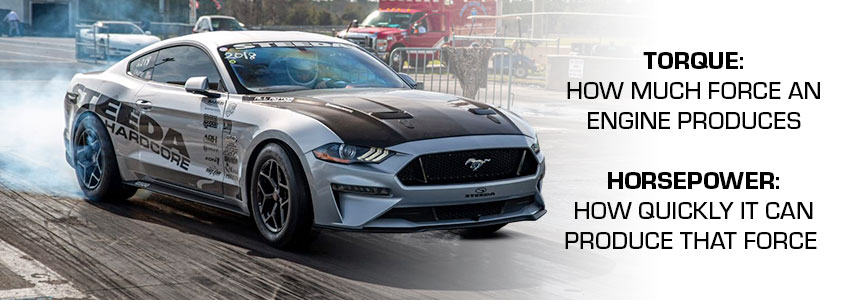
Horsepower vs Torque
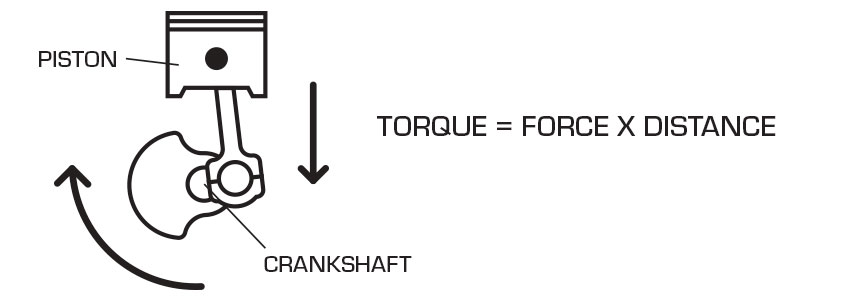
What Is Torque?
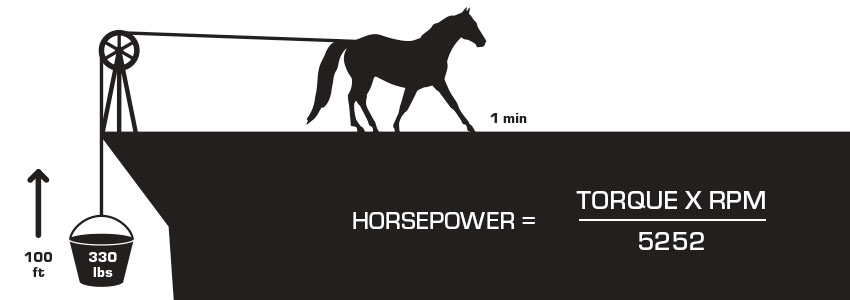
What Is Horsepower?
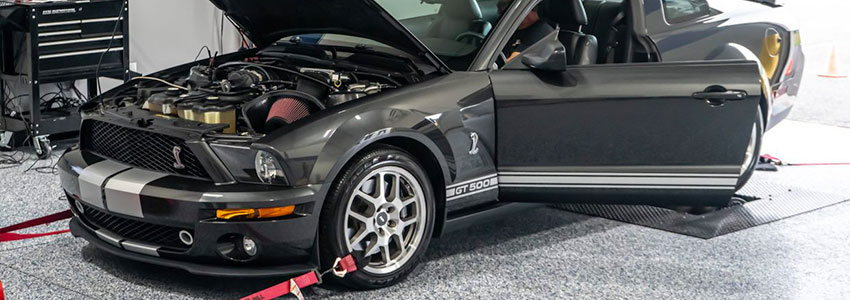
Figuring Out Torque And Horsepower For a Mustang
Horsepower vs Torque: Dyno Graphs
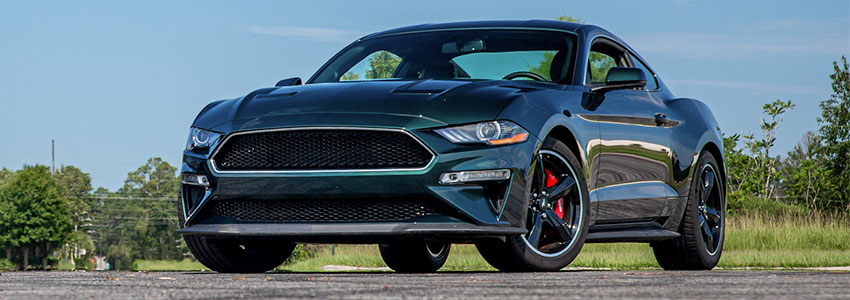
2019 Bullitt Mustang Dyno Graph
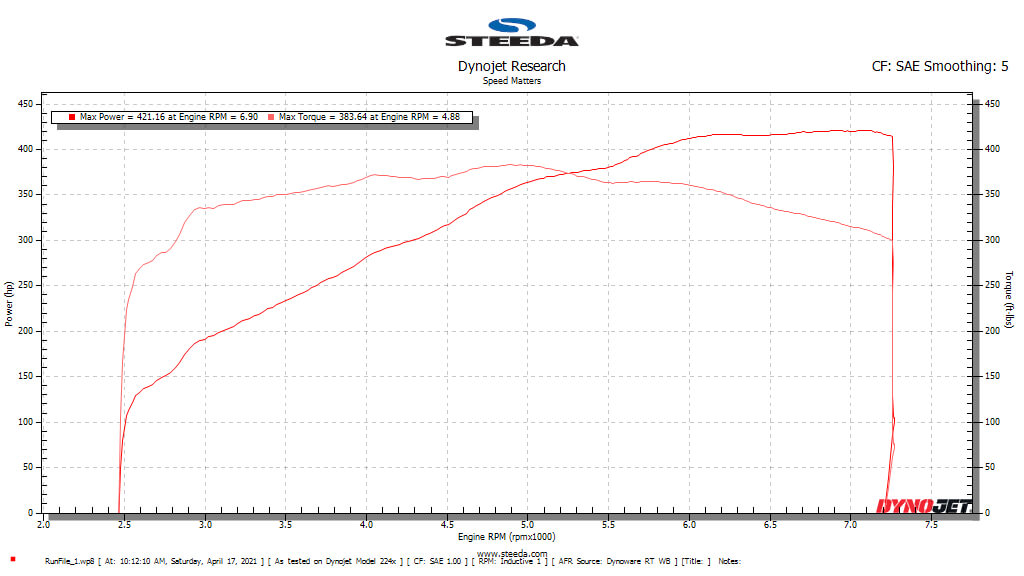 2019
Mustang Bullitt Dyno Graph
(Stock)
2019
Mustang Bullitt Dyno Graph
(Stock)
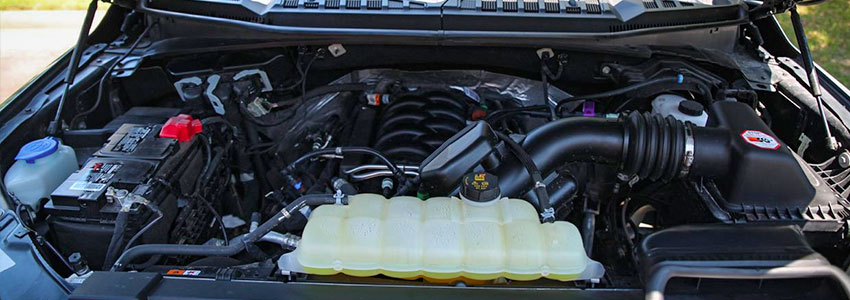
Ford F-150 With Different Engines Dyno Graph
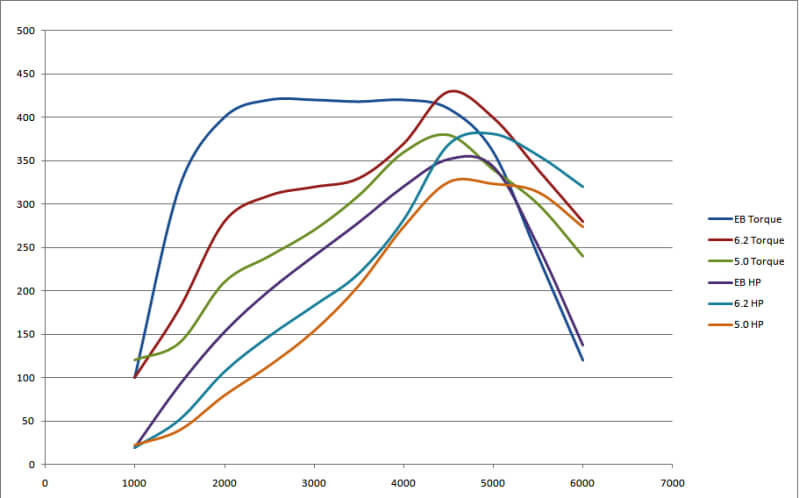
Ford
F-150 HP vs TQ
(Source: F-150
Forum)
Related Articles




